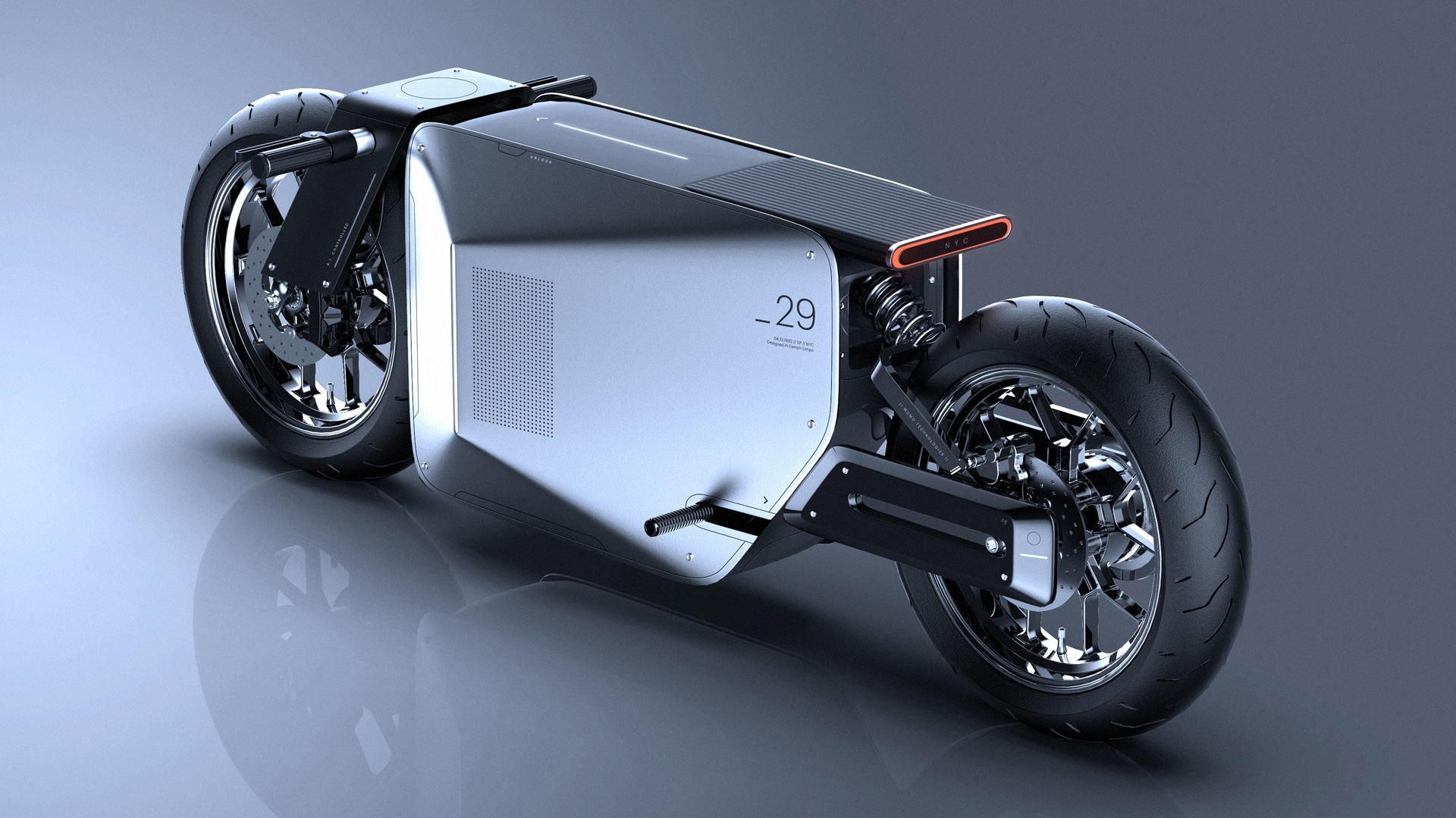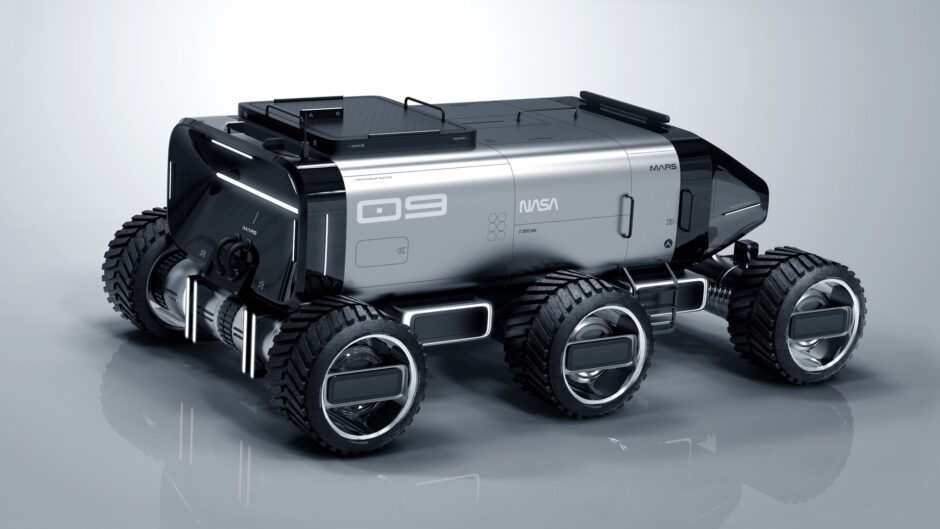Danilo Makio Saito is a multi-disciplinary designer based in São Paulo, Brazil. Over the years he has honed his skills leading projects and working with some of the top brands around the world to improve their products through user-centered design. As an accomplished concept artist as well, his personal projects display just how expansive a talent he has. We were honored to catch up with Danilo to hear his story and what role KeyShot plays in his process.

Danilo Makio Saito
Website | Artstation | Instagram | Linkedin
Modeling software used: Blender, Gravity Sketch, Rhino, Alias
You’ve had an array of experience across different design disciplines. What sparked your interest in Design and led to your current role as Head of Design, XR?
Like many designers, I’ve always loved drawing since I was a kid. And I’ve also always been curious and passionate about learning new things. So those two things led me to the path of getting interested in Design. When I started studying Design at the University of Sao Paulo (FAUUSP), I was very lucky to be exposed to a variety of disciplines to which design is related. I was able to study industrial design, graphic design, digital design, technology, typography, engineering, and many other disciplines, and most importantly to learn the real design process where we put people at the center. I met amazing teachers and also great design students who are now doing amazing things in different areas.
I started my career more focused on industrial design, specifically in the automotive industry. Designing cars was one of my passions since I was a kid, and I was fortunate to work at Volkswagen’s Design Studio as an intern. It was an amazing experience, and I worked with amazing professionals and learn a lot during this period. It was like living a child’s dream.
I started my career more focused on industrial design, specifically in the automotive industry.”
However, due to my multidisciplinary background, I was also curious to explore other areas and work in a more open design process. That’s why after that I went to work at Questtono Manyone, a global design consultancy, where I could really apply the human-centered design process at its core to many different types of challenges. During this time, I’ve worked on several projects for companies like WarnerMedia, Magic Leap, Niantic, LG, Samsung, Ford, Panasonic, and also helped early-stage startups to bring their products to the market. I was able to wear many hats over these years working with industrial design, UX, service design, concept art, research, strategy, and technology, where I helped design several physical and digital products, services, and experiences.

After a couple of years, I became Head of Experience Design in the Sao Paulo office, where I helped build a team and led several design projects for physical and digital products and experiences. And more recently, I transitioned to becoming Head of Design focused on XR (AR/VR & Mixed Reality) in our New York office. In this role, I’m leading projects that are helping some of the major tech companies in this field to explore, envision, and communicate how immersive technologies will transform the way people interact and live digital experiences.
In addition to that, I’m also a concept artist/designer. I do a lot of sketching, 3D modeling, and digital painting in my daily work to showcase ideas for immersive experiences, but I also love doing personal concept artwork as much as possible. This keeps me practicing and pushing my skillsets, but also makes me enjoy doing things for fun. I simply love creating spaceships, futuristic concept vehicles, and sci-fi environments in my free time.

What was the turning point in your career? or highlights or your career?
I think I had two turning points in my career. The first one was when I decided to pivot my career in the automotive industry and pursue working with design in a more holistic way. I think this made me develop a different set of skills that aren’t essentially related to sketching or 3D modeling, but more related to strategy, business, and user experience.
The other turning point happened when I started working with Magic Leap in 2018 and really got involved in the spatial computing world. They are one of the leading companies in building this mixed reality technology, and I met an amazing team who was working there who came from companies like Lucasfilm, NASA, Blizzard, Weta, Apple, Google, and many others. The work I’ve done to help them envision future experiences and use cases with this new emerging tech has opened my eyes to the many opportunities we have with this new medium, which made me later decide that I wanted to be focused on exploring these immersive technologies. I realized that this was a perfect way to combine my experience in both physical and digital product design, and it also made me start practicing and using concept art as a way to envision and communicate ideas for these future experiences. After that, I was able to work on many other XR projects for companies in the entertainment, gaming, health, and tech sectors.

What is unique about your approach to a project/design?
It depends if it’s a client project or just a personal one.
For client projects, I think what’s unique is the collaboration with a multidisciplinary team from the beginning of the process. Most of the projects we do involve complex challenges, so having people from different expertise working together is really key. Also, I always love to prototype fast our ideas and solutions, whether it’s through sketching, 3D modeling, digital paintings, storyboarding, creating wireframes and UI screens in Figma, etc. Iterating quickly with the team, client, and other stakeholders makes sure we get feedback early in the process and move in the right direction.
For personal projects, I think it’s just the creative freedom I like to give myself to explore whatever comes to my mind. With client projects, we always have constraints, business strategies, and many stakeholders to align. Personal ones, to me, are more an internal process, where I just think about what I want to practice and improve in my skillset and what I’m going to have fun doing. I always try to keep saving lots of inspiration and sketching in my notebook ideas at any time, so when I have time, I just sit down, revisit those ideas, and start building them in 3D, whether it’s a spaceship, a vehicle, or just an environment painting.
I always try to keep saving lots of inspiration and sketching in my notebook ideas at any time, so when I have time, I just sit down, revisit those ideas, and start building them in 3D, whether it’s a spaceship, a vehicle, or just an environment painting.”

What is your primary 3D modeling software?
My primary 3D software is Blender. I simply love working with polygons because of the freedom I have in my creative process and how quickly I can block any shape and form. Also, because it’s free, it’s easier to have access and the amount of tutorials from different artists and designers you can find online is immense.
The other tool I love is Gravity Sketch. Whenever I have time, I always jump to my Oculus Quest and start playing with it. Sketching and 3D modeling in VR is very fun and intuitive, and I think we are going to see more and more people using it as a primary tool in the near future.
Lastly, for industrial design projects, I always use Rhino or Alias, as precision and surface control are really important for these types of projects.

Where in the process do you use KeyShot?
I use KeyShot both in the middle of the design process and at the end to create final renderings. Since KeyShot is super easy to set up a scene, using it during the process is perfect to see if you are going in the right direction and see where it needs more refinement. And when I get to the final 3D model, I spend a little more time playing around with materials, textures, environment, and camera to get to amazing renderings for final presentations. I also use KeyShot to create animations when I want to showcase different interactions and movements in a scene or in an XR experience.
Since KeyShot is super easy to set up a scene, using it during the process is perfect to see if you are going in the right direction and see where it needs more refinement.”

What makes KeyShot an important tool to have?
The amazing rendering results that you can have in such a short period of time. I can easily import a 3D model, quickly play with different materials, add any texture and play with the HDRi environment to create amazing high-resolution renderings fast. As speed is very important in these client projects, having a tool that you can achieve great results fast is key to almost every design process. And KeyShot is definitely one of the main tools that deliver that.

What advice would you give to someone interested in doing what you do?
Be curious to learn new things: As designers, we always need to keep learning. I love reading books (design and non-design related), seeing the workflow of other artists and designers, listening to interviews in podcasts, reading articles on Medium, learning new tools, etc. All of this helps keep me learning new things every day that somehow end up influencing my design decisions, helping in the discussions I have with the team during projects, or just improving my workflow.
Get inspired: I always try to spend some time on Pinterest, Instagram, ArtStation, Dribbble, and any other platform to just look and save interesting images. I’m also always inspired by listening to other people’s stories and experiences. Gathering inspirations daily is one of my main fuels to keep myself creative and trying new things every day.
Practice: Like any sport or ability you need to master, you always need to keep practicing to improve your skills. Only in this way you are able to become faster, start seeing details that you weren’t able to see before, and really start pushing the refinement of your work to the next level.
“Like any sport or ability you need to master, you always need to keep practicing to improve your skills.”











